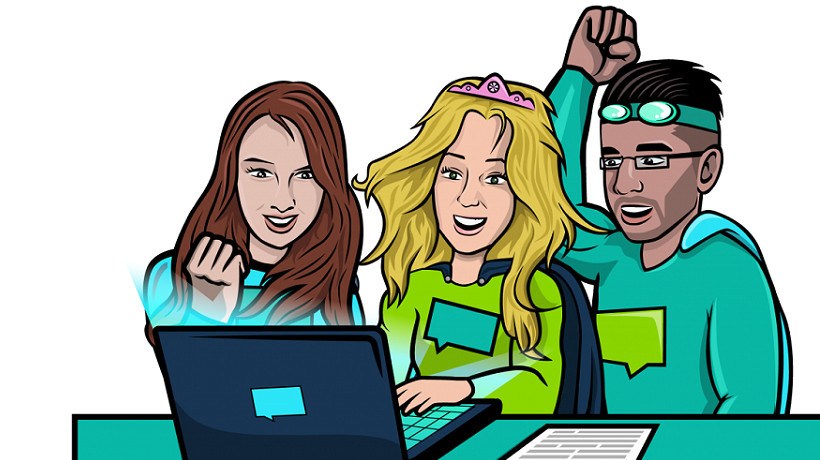Why Does Behavior Change Fail?
Last year I decided to exercise more. I usually play soccer two times a week, but I noticed that my stamina was not where it should be. After watching some motivational videos, I landed on swimming. With motivation over the roof, I planned to swim every day during lunchtime. After the first swim, I lowered the bar to three times a week. The problem with swimming is that you need to get to a swimming pool, change, and then you may or may not have a free lane to swim in. After a month, my motivation went downhill. However, I saw people doing a spin class. No undressing, no waiting for swimlanes, no shower, etc. Hop on a bike and sweat.
I "picked up" spinning. However, spinning happens in classes and not when you want. So I signed up for a class on Friday mornings and blocked my calendar to prompt me to go. I was so motivated that I almost bought special shoes. But, I figured I'd try this spin class first.
During my first and last spin class, I almost died. For starters, the instructor that I picked, based on the level, was absent and a substitute came. She was late, so there was no time to chat. To her credit, she asked if anyone was new. I raised my hand and I was ready to explain that I don't even know if the bike is set up right...when she said, "Oh, okay! Just hang in there!"
I was hanging...I tried my best not to fall off the bike (apparently she did an express version of the spin class). I never went back for any more spin classes.
Behavior Change Is Not Just Learning
I'm sure my story is not unique. We all have tried exercise, diet, quitting bad habits, etc. Often, we blame ourselves for not having enough willpower like all those Instagram heroes with their before and after pictures. The thing is, changing behavior, especially habits, is not as simple as watching a motivational video online.
What Does This Have To Do With Learning?
In L&D, we often set out to change workplace behaviors by creating a course. We have learning objectives, sometimes even performance objectives, in place. We ensure learner completions and wait for the Level 1 feedback smile sheet. Learners pass our knowledge checks, sometimes even context-driven authentic scenarios with real application yet they won't do what they're supposed to be doing. Why?
To investigate, let's explore two seemingly, completely different concepts: BJ Fogg's MAP or MAT (this article) and Csíkszentmihályi's Theory of Flow (next article).
B(ehavior Change) = MAP
If you're interested in behavior change (even if just your own behavior), you should know about BJ Fogg's research. A good place to start is his Tiny Habits book [1].
In short, Fogg's research indicates that there are three elements playing primary roles in successful behavior change: B = MAP. They are motivation, ability, and prompt. (You'll find prompt sometimes listed as "trigger," and the equation becomes MAT. These are the same things.)

The horizontal axis shows your ability to do the desired behavior. It is a scale from hard to do things to easy to do things. You can control your ability by learning, practicing, etc. The vertical axis shows your motivation to do the behavior; motivation changes, sometimes it is out of your control.
Motivation And Ability
Motivation and ability work together by affecting each other. With high motivation, you can do hard things. With practice, you can move to the right on the ability axis, which in return will require less motivation for the same behavior.
Motivation and ability are continuous, while the last element that is required for behavior change is not. It is a prompt to trigger the behavior. Without a prompt (a distinct event), behavior change won't take place.
Do you consider workplace prompts when you design a learning solution to achieve behavior change?
Swimming Example
Let's discuss my previous example: swimming. I had high motivation to start with. This high motivation compensated for the difficulty of getting to the swimming pool, changing, checking out if there's a free lane, etc. Swimming itself was hard at first but with every visit, I did more laps. So, I moved toward the "easy to do" horizontal axis, somewhat. At the same time, motivation dropped. Once I dipped under the action line, the behavior stopped. I didn't set up a reliable prompt either to trigger the swim. Sometimes I remembered, sometimes it was too late by the time I realized it was time to swim.
L&D Considerations For The MAP
Now, let's consider Learning and Development. A single course, no matter how cleverly designed, will have at least one problem: the prompt. Even if people learn the right behavior in a course, it is not the same as doing the behavior. After closing the course, there might not be a reliable prompt for them to trigger the desired behavior. Kind of like in my swimming case, we hope they will remember to do the right thing.
How Can We Improve The Impact Of Our Design?
Let's think about how Fogg's MAP applies to learning. A "learner" has an ability before, during, and after the course (or any learning event). Improving the learner's skills to be able to execute the desired behavior is good. That can move the learner more to the right on the Ability axis. We also need to make sure there is enough motivation, at least up front. But that's not enough. We need to design clever prompts within the context of the employee's workflow that triggers the behavior.
Designing prompts is not what a traditional learning professional does. You can't design prompts in a vacuum. You must know your audience and experience their workflow. These prompts can be built-in. For example, when a customer service agent picks up the phone to talk to a customer a pop-up screen shows the customer's name. That is the perfect prompt to practice in a learning simulation to make sure the agents use the customer's name during the call. If you can associate the real prompt with the practice simulation, the chances that the agents will remember to use the customer's name throughout will be higher.
Cathy Moore's action mapping (finding out the root cause of the barrier that holds people back from doing the desired behavior) can also help you design better solutions that move learners on the Ability axis to the right. Removing barriers increases ability. For example, one of the barriers can be that the agent does not know how to pronounce the customer's name, so they don't pronounce it. In a learning solution, you can address this by making sure agents know what an impact it is for anyone hearing their own name (knowledge/awareness problem), and then offer practice on how to ask the customer for the right pronunciation (skill).
In another example, we used the customer service agent's beep sound (the beep they hear when a customer is on the line) as the prompt in a simulation. Building in prompts from the authentic environment where the work takes place can maximize the impact of behavior change design.
You can also insert prompts into the workflow. Think of posters in the water cooler area, coffee cups with a single random question on them, mousepads as a reminder, etc. There's a lot more to learn from Fogg's research, but let's start with small things: B = MAP. Pick a project with the desired behavior change. Focus on the ability and prompt. Measure before and after the intervention.
In the next article, we'll explore more of the motivation part from a different angle.
References:
[1] Tiny Habits








